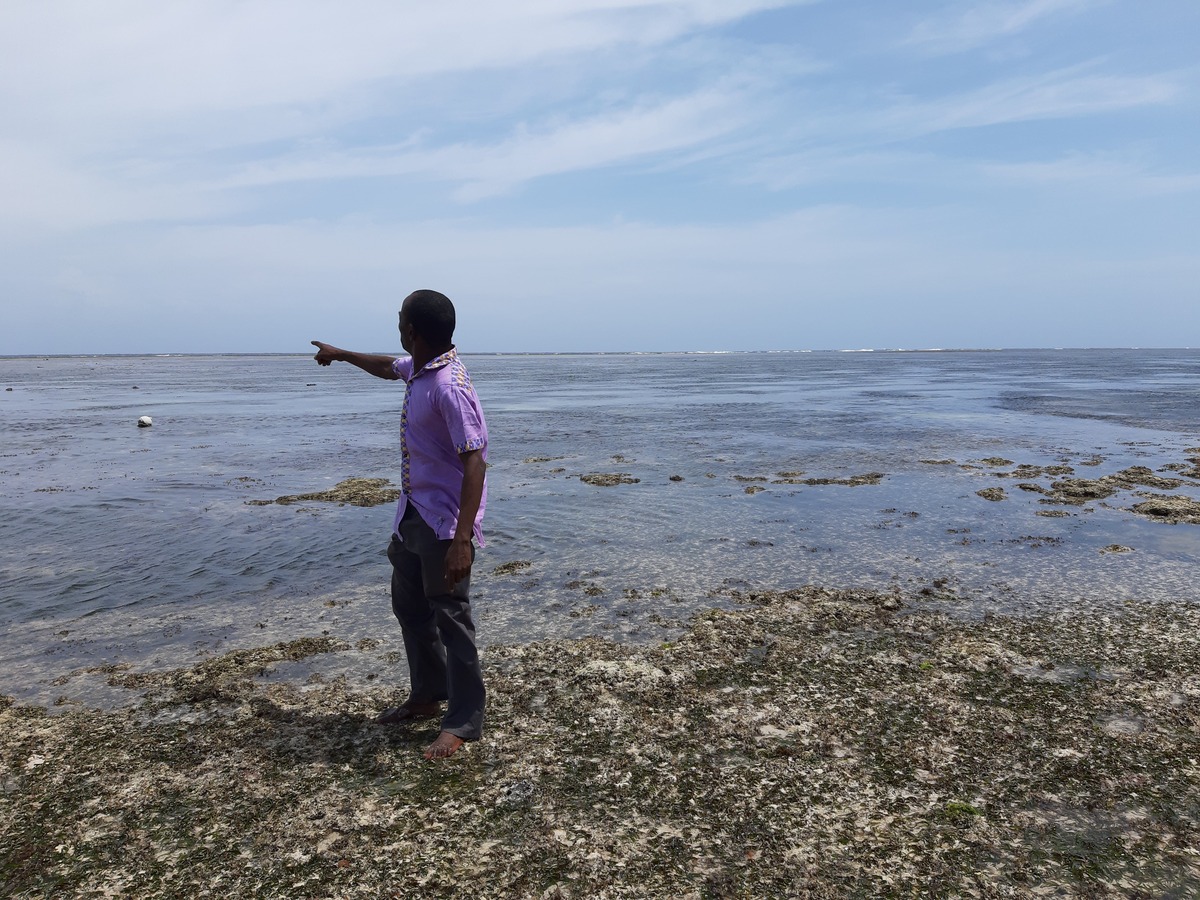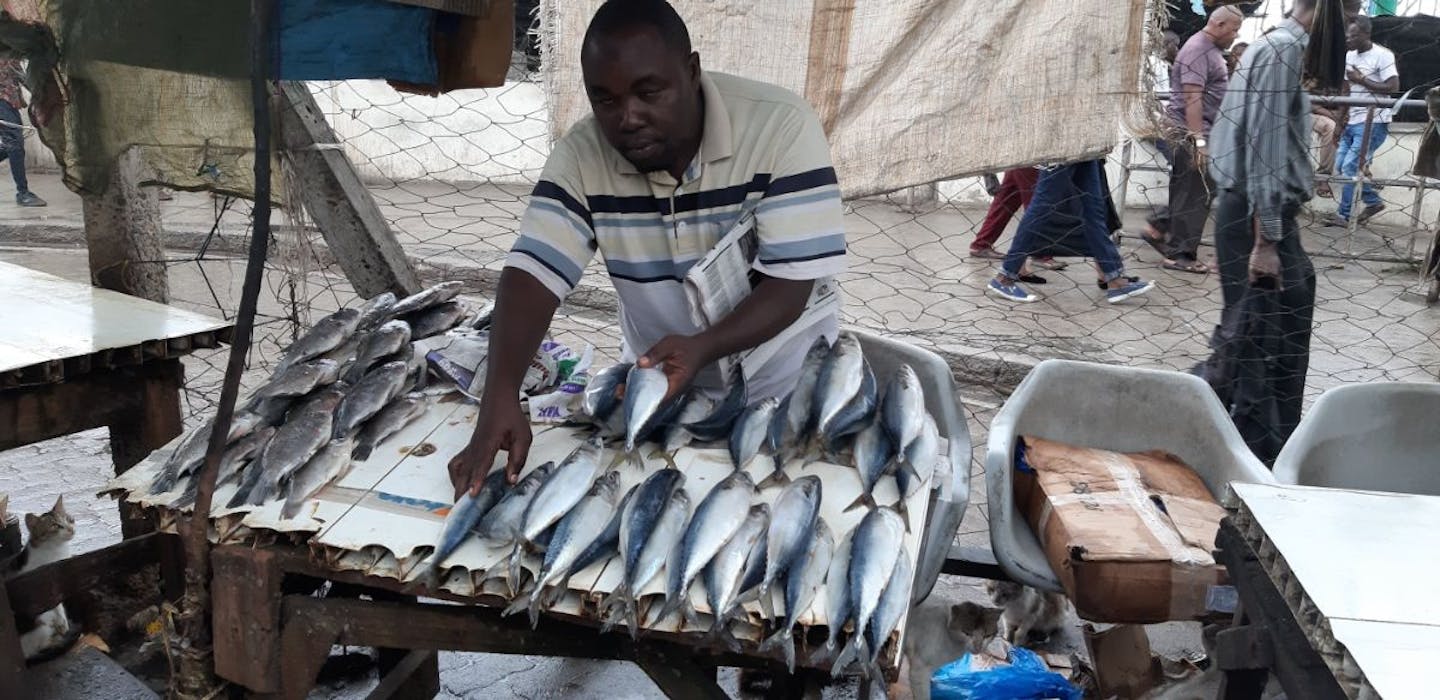Locally managed marine areas shield Kenyan fishermen from climate change effects
52-year-old Dickson Juma Gereza from Kilifi, Kenya remembers how he noticed the changed colour of the corals while on a fishing expedition in Kuruwitu off the Indian Ocean just a few months after the El-nino southern Oscillation event that caused huge rains in Kenya.
Gereza, who relied on fishing to fend for his family, did not know how the changing colour of the corals would affect his livelihood until in 2003 when he caught just 7 kilograms of fish, short of a client’s order of 10 kilograms.
“He asked for how long my fish catches had been dwindling and I told him the reduction has been gradual” Gereza said.
It is then that Gereza and his fellow fishermen who were beginning to get worried about their threatened livelihood started researching on how to combat the problem and came up with Kuruwitu, the first locally managed marine protected area in East Africa.
Their marine protected area that has been un-fished since 2006 measures approximately 3 kilometres squared and it has been a huge success with the International Union for Conservation of Nature (IUCN) partnering with local organizations to try to replicate it in African countries such as Seychelles, Kenya, Tanzania and Mozambique.
Just like land, the ocean is affected by carbon dioxide while at the same time; it can act as a carbon sink.

Some of the Corals that have regrown as a result of Kuruwitu being protected from fishing. Janet Murikira.
According to the IUCN, increasing carbon dioxide emissions cause ocean acidification and ocean warming, thus, causing coral bleaching that also inhibits the growth of coral reefs and reduces their ability to act as food and habitat to about one-third of the marine fish species.
“CO2 emissions are also making the ocean more acidic, making many marine species and ecosystems increasingly vulnerable. Ocean acidification reduces the ability of marine organisms, such as corals, plankton and shellfish, to build their shells and skeletal structures. It also exacerbates existing physiological stresses (such as impeded respiration and reproduction) and reduces growth and survival rates during the early life stages of some species,” says the IUCN.
In 2010, a report by the World Meteorological Organization indicated that 16% of the world’s coral reefs were destroyed by rising temperatures during the El Niño–Southern Oscillation event in 1997–1998, just a few months before Gereza started noticing the changed colour of the corals in Kuruwitu.
While Gereza and his neighbours mainly set aside the marine protected area in an effort to protect the corals and fish breeding grounds, the ripple effect has been the protection of Seagrass meadows and salt marshes that had been subjected to constant destruction by fishermen practicing beach-seine fishing. Beach-seine fishing is a fishing method where a fishing net is cast in shallow waters and dragged to the shore with the catch. The method is considered very destructive to seagrass meadows that are trapped as bycatch and later discarded.
Even though beach-seine nets were banned by the government in 2001, poor enforcement and lack of cheaper alternatives have seen the nets still being used in places like Lamu near the border with Somalia.
Seagrass meadows are estimated to occupy an area of up to 600,000km squared in the ocean.
“In addition, seagrass accounts for 10 percent of the ocean’s capacity to store carbon—so-called “blue carbon”—despite occupying only 0.2 percent of the sea floor, and it can capture carbon from the atmosphere up to 35 times faster than tropical rainforests,” The Economist group’s World Ocean Initiative estimates.
Though infrastructural activities have contributed to larger destruction of seagrass meadows in Kenya, experts feel replicating the Kuruwitu model elsewhere is a viable climate change response solution.
This, they say, can be done by encouraging the community to use fishing methods that are not destructive to seagrass and educating them on how locally managed marine protected areas can help protect seagrass meadows.
“The community is the custodian of the ocean and when you educate them, you make them champions for the ocean and hence you will end up with an army of ocean protectors. ’’ Thomas Sberna the East and South Africa Regional Technical Coordinator - Marine and Coastal Resilience at the IUCN says.

Dickson Juma Gereza showing how far their Marine protected area stretches. Janet Murikira.
The Kuruwitu model project has been replicated by 26 different fisherfolk groups along the Kenyan coast and in 2017 the project was named among the winners of the United Nations Development Program (UNDP) Equator Prize, which recognizes a community’s nature-based actions to advance the 17 Sustainable Development Goals (SDGs).
However, managing a locally managed area in Kenya is not without challenges.
Kuruwitu’s biggest challenge has been the lack of funds to pay community volunteer scouts who ensure that fishermen and fishing trawlers do not fish in their marine protected area.
In a bid to address the problem, the community recently started taking tourists for snorkeling expeditions in a bid to close on their income gaps.
In February, the IUCN in collaboration with the International Climate Initiative which is funded by the German environment ministry started a project to encourage local communities in Kenya, Seychelles, Tanzania, and Mozambique to protect their marine ecosystems and biodiversity using initiatives similar to what Kuruwitu is doing.
Though the initiative may have come a bit late, for Gereza, the effects of marine degradation are a ticking time bomb.
“The environment will treat you and your generation the way you treat it, there is no shortcut about it” Gereza says.



